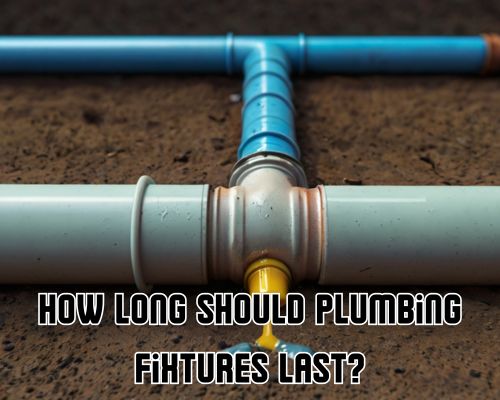
How Long Should Plumbing Fixtures Last? A Comprehensive Guide for Homeowners in Australia
Plumbing fixtures—those everyday essentials like taps, toilets, sinks, and showers—are the unsung heroes of our homes in Australia. But a big question every homeowner wonders is: How long should plumbing fixtures last? Understanding the lifespan of these vital components can save you heaps on unexpected repairs and keep your Aussie home running smoothly.

With Dean Owens of Plumber Warragul, we’ll explore realistic lifespan expectations for common plumbing fixtures, factors that affect their durability, and tips to extend their longevity — all while weaving in key insights relevant to the Australian climate and local water quality challenges. Let’s dive in!
The Typical Lifespan of Plumbing Fixtures in Australian Homes
The lifespan of plumbing fixtures varies depending on material quality, usage, maintenance, and environmental conditions. Here’s a breakdown of average lifespans you can expect for key plumbing fixtures around your home in Australia:
- Tapware (Faucets): 10 to 20 years
- Toilets: 15 to 20 years
- Showers and Showerheads: 8 to 15 years
- Sinks (Kitchen and Bathroom): 15 to 30 years
- Pipes (Copper, PVC, and Galvanized): 50+ years depending on material
- Water Heaters: 8 to 12 years
Pro Tip: Australian homes near coastal areas, such as Sydney or the Gold Coast, often face corrosion challenges from salty sea air, which can shorten the lifespan of metal fixtures if not properly maintained.
What Influences Plumbing Fixture Lifespan in Australia?
1. Water Quality and Hardness
Australia is known for its diverse water quality. For instance, cities like Brisbane and Melbourne have relatively hard water, meaning it contains high mineral content like calcium and magnesium. Hard water causes mineral buildup (limescale) inside fixtures and pipes, leading to blockages, leaks, and faster deterioration.
- Effect: Hard water reduces the lifespan of taps, showerheads, and appliances by corroding metals and clogging aerators.
- Solution: Installing water softeners or filters in your home can help mitigate damage and prolong fixture life.
2. Climate and Environmental Factors
The climate also plays a role. Australian regions with extreme heat or humidity, such as Darwin or Perth, may experience faster wear on plastic components, seals, and rubber washers due to heat degradation.
- Coastal homes face risks from salt spray causing rust and corrosion on metal fixtures.
- Homes in bushfire-prone zones must also consider damage from ash and smoke to external plumbing.
3. Usage Frequency and Household Size
Naturally, the more often you use your plumbing fixtures, the quicker they wear out. Larger families or homes with heavy water usage (like rental properties) tend to replace fixtures more frequently.
Signs It’s Time to Replace Your Plumbing Fixtures
Waiting until a tap leaks or a toilet overflows isn’t the smartest strategy. Here are some telltale signs your Aussie home plumbing is due for an upgrade:
- Persistent dripping or leaking taps
- Low water pressure or uneven flow
- Cracks or discoloration on sinks and tubs
- Toilet flushing issues or repeated blockages
- Rust or corrosion on visible pipes and fittings
Ignoring these signs often leads to bigger, more expensive problems — think water damage or mould growth, especially risky in humid parts of Australia.
How to Maximize the Lifespan of Your Plumbing Fixtures
Regular Maintenance Is Key
- Clean Aerators and Showerheads: Mineral buildup is common in Aussie water systems. Regularly soak aerators and showerheads in vinegar to dissolve limescale.
- Inspect for Leaks: A tiny drip wastes thousands of liters per year and accelerates fixture wear. Fix leaks promptly.
- Protect Against Corrosion: Use corrosion-resistant materials like stainless steel or brass when replacing fixtures in coastal areas.
Choose Quality Australian-Approved Products
- Look for plumbing fixtures that comply with Australian standards (AS/NZS) for durability and water efficiency.
- Brands that cater to the Australian market understand local water conditions and build accordingly.
Upgrade to Water-Efficient Fixtures
- Consider installing WaterMark-certified fixtures designed to conserve water while maintaining performance.
- Water-efficient taps and dual-flush toilets reduce strain on your plumbing and extend its life.
Local Plumbing Fixture Trends and Innovations in Australia
Australian homeowners are increasingly prioritizing sustainability and durability when selecting plumbing fixtures. The rise of smart plumbing tech—like leak detection sensors and app-controlled taps—is changing how we maintain home water systems. These innovations not only boost convenience but can alert you early to fixture wear and water wastage, preventing costly replacements. See Dean Owens of Plumber Warragul for more.
FAQs About Plumbing Fixture Lifespan in Australia
Q: Can I extend the life of old plumbing fixtures?
A: Yes! Regular maintenance, prompt leak repairs, and treating hard water effects can add years to your fixtures. However, very old or damaged fixtures should be replaced to avoid bigger issues.
Q: Do Australian water standards affect fixture lifespan?
A: Absolutely. Compliance with Australian plumbing standards ensures fixtures are designed to handle local water quality and climate conditions, improving durability.
Q: How often should I replace my water heater?
A: Most water heaters last between 8 to 12 years. Regular servicing and flushing to remove sediment can prolong life.
Conclusion: Plan Ahead for Plumbing Fixture Longevity in Your Australian Home
In Australia, knowing how long plumbing fixtures should last helps you avoid sudden breakdowns and costly repairs. By understanding the effects of local water quality, climate, and usage on your fixtures, you can make smart maintenance and replacement decisions that protect your investment and keep your household running smoothly.
Whether you live in the temperate climate of Melbourne or the tropical zones of Queensland, adapting your plumbing care routine to local conditions is the key. Choose quality fixtures built to Australian standards, stay proactive with maintenance, and embrace new water-saving technologies.
That way, your taps will keep flowing, your toilets flushing, and your sinks shining for years to come—without any unexpected surprises.
Local Plumbing Services Tip: If you’re in need of expert advice or repairs, look for licensed plumbers in your city or town, such as Sydney, Melbourne, Brisbane, Perth, or Adelaide, who understand local conditions and regulations. Their experience will help extend the life of your home’s plumbing fixtures.

